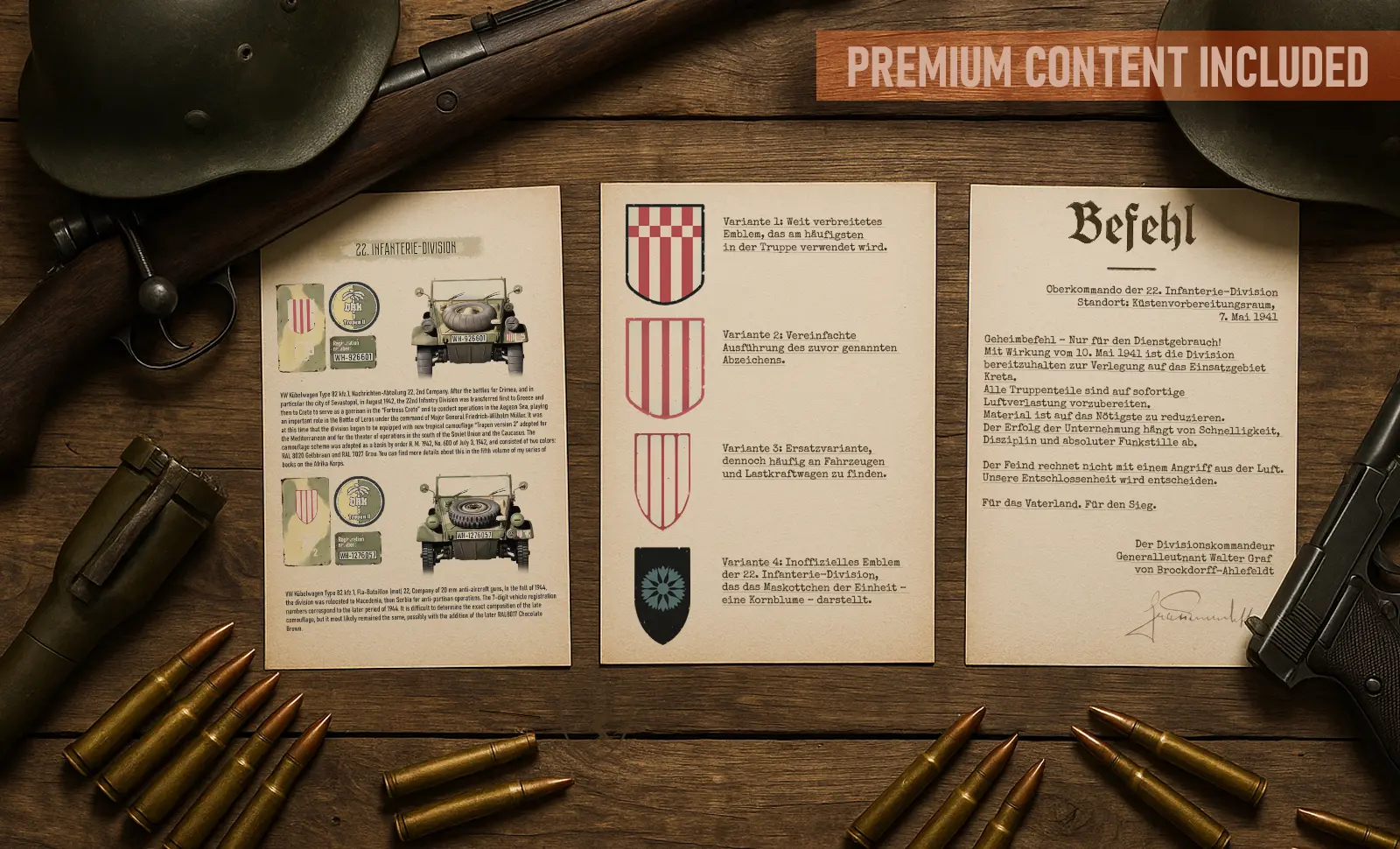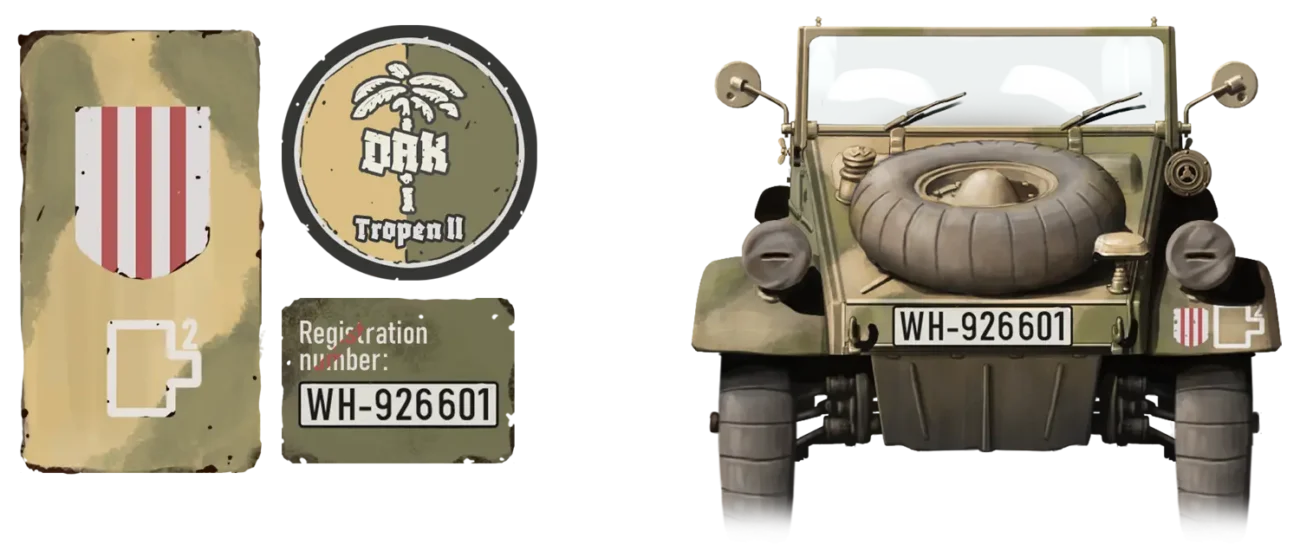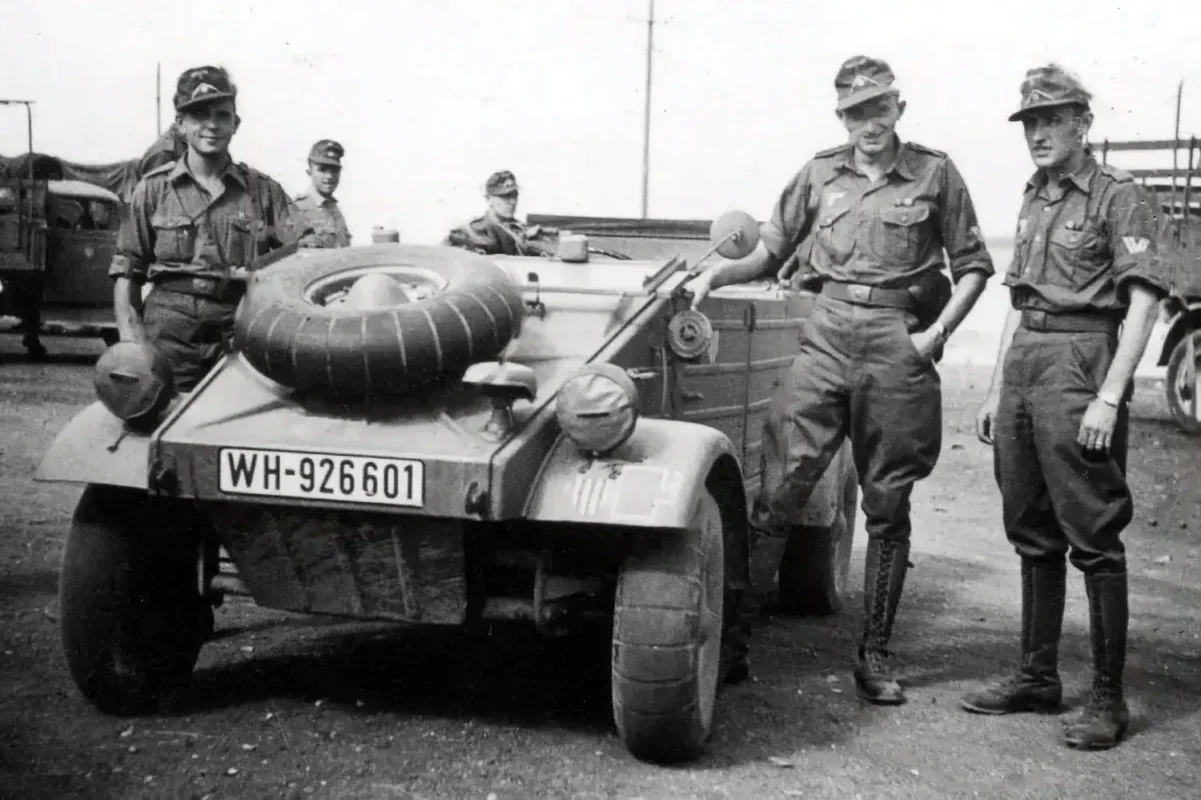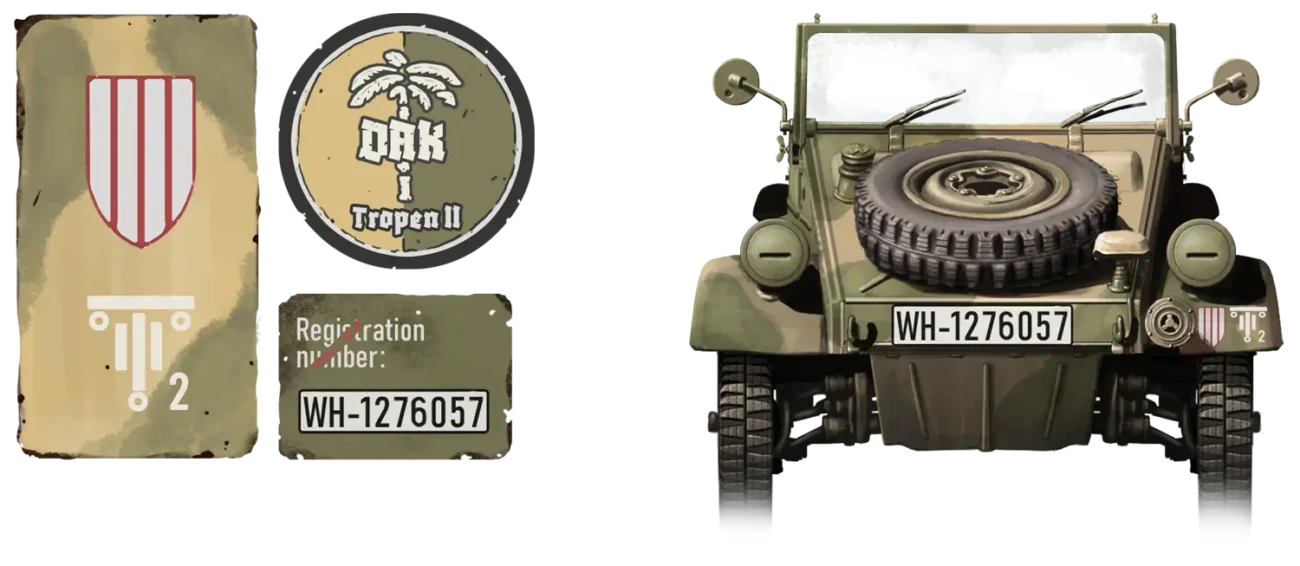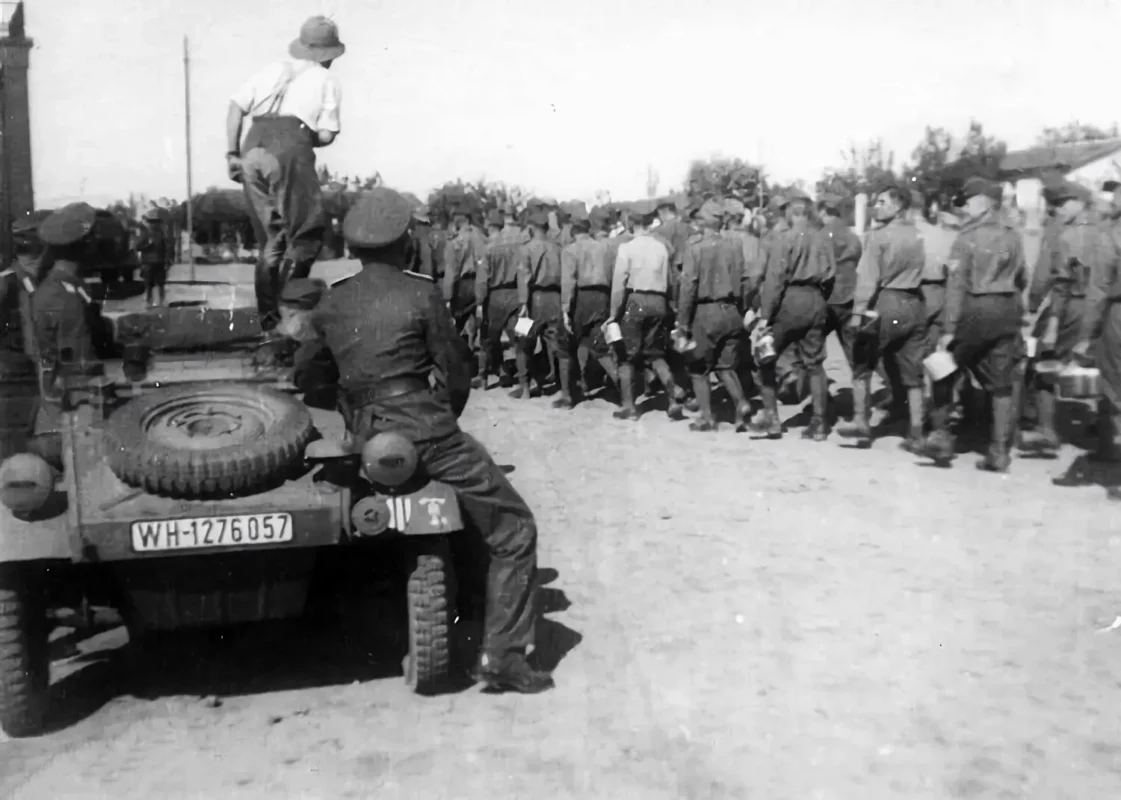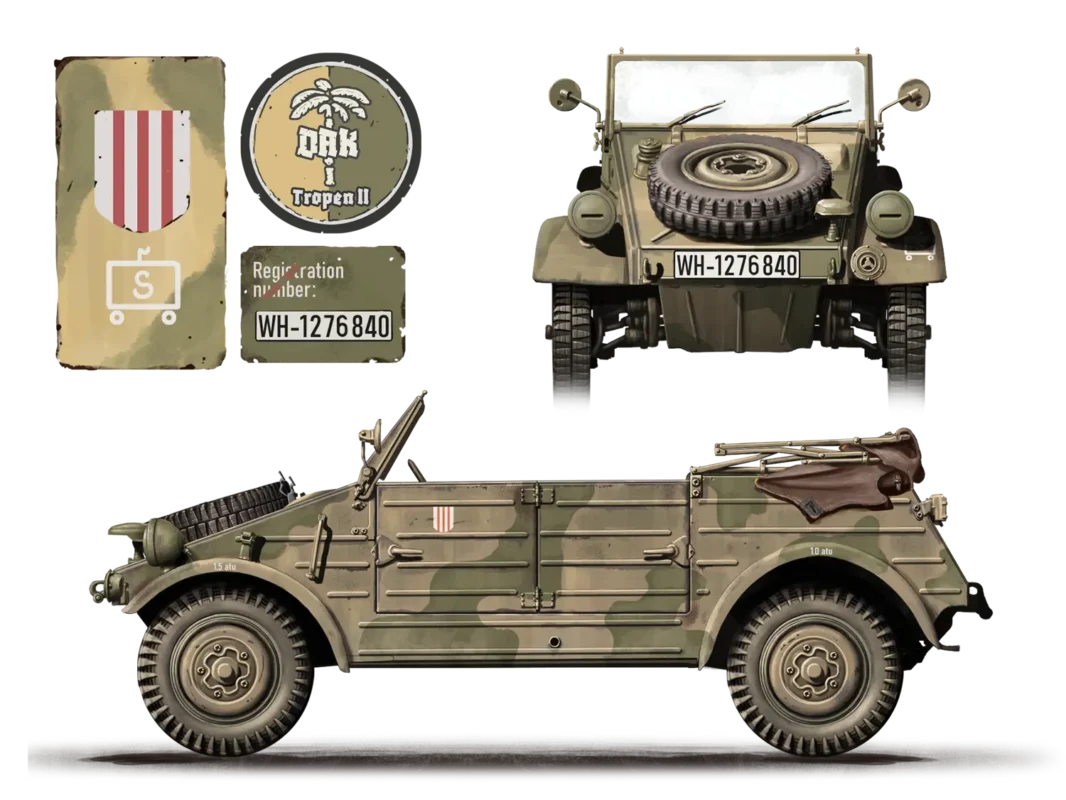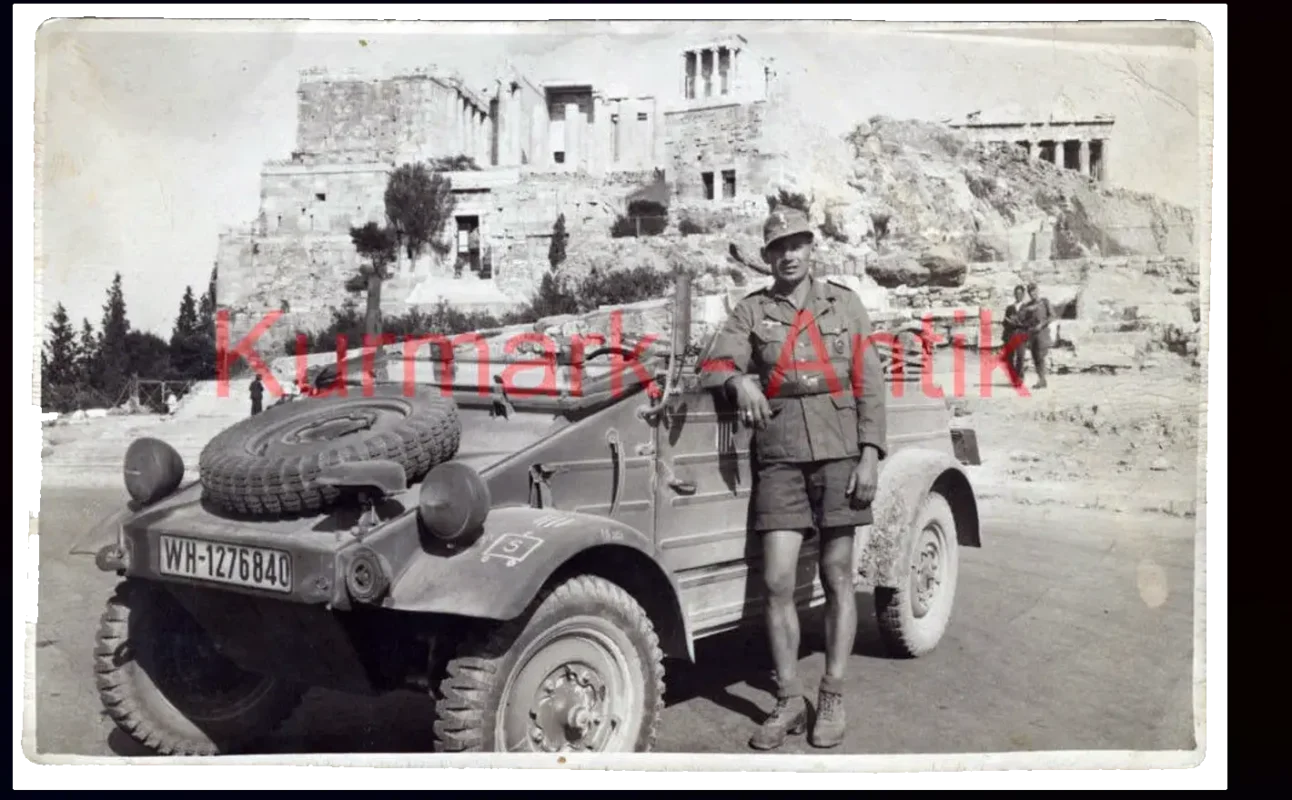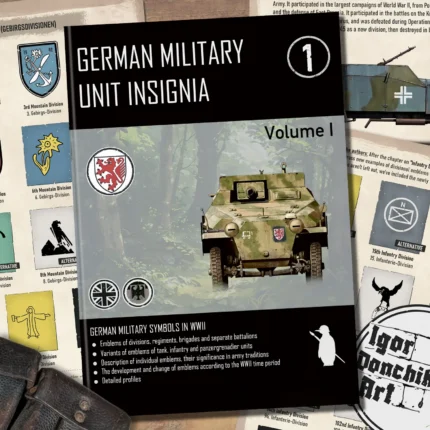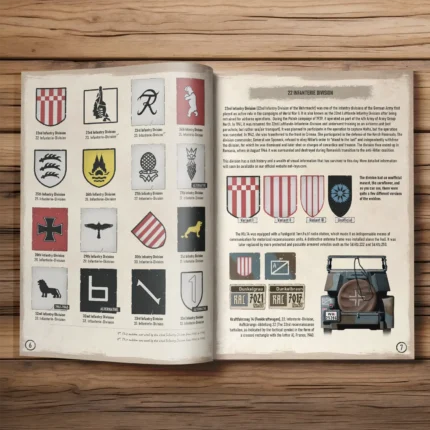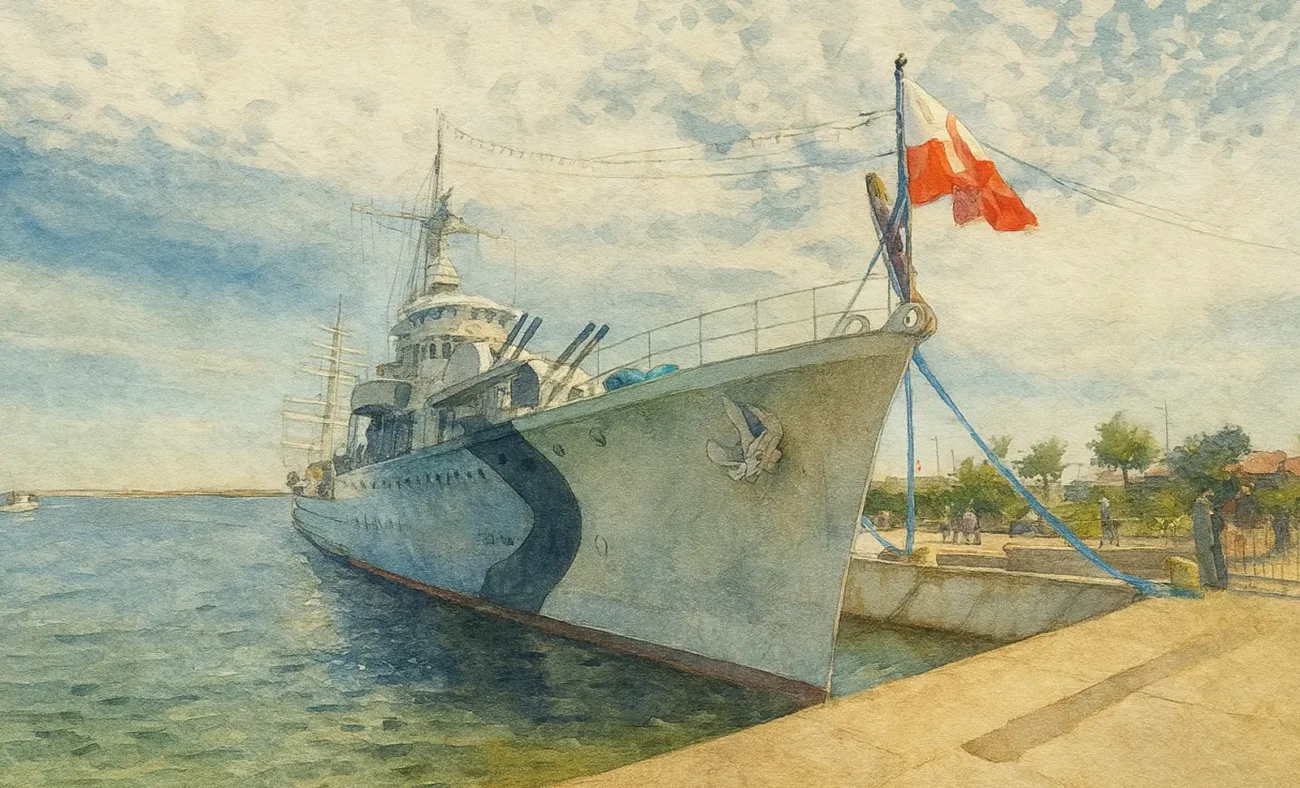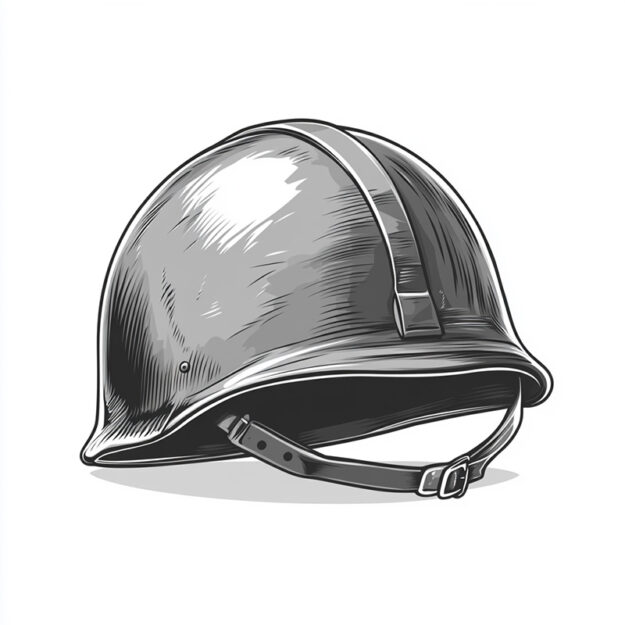The 22nd Infantry Division was a German military formation of the Wehrmacht, classified as an Infanterie-Division — a standard combined-arms unit composed primarily of infantry, artillery, and support elements, designed for flexible frontline operations.
NB! We will continue to update this publication as new details about this unit come to light.
Last updated: 12 July 2025.
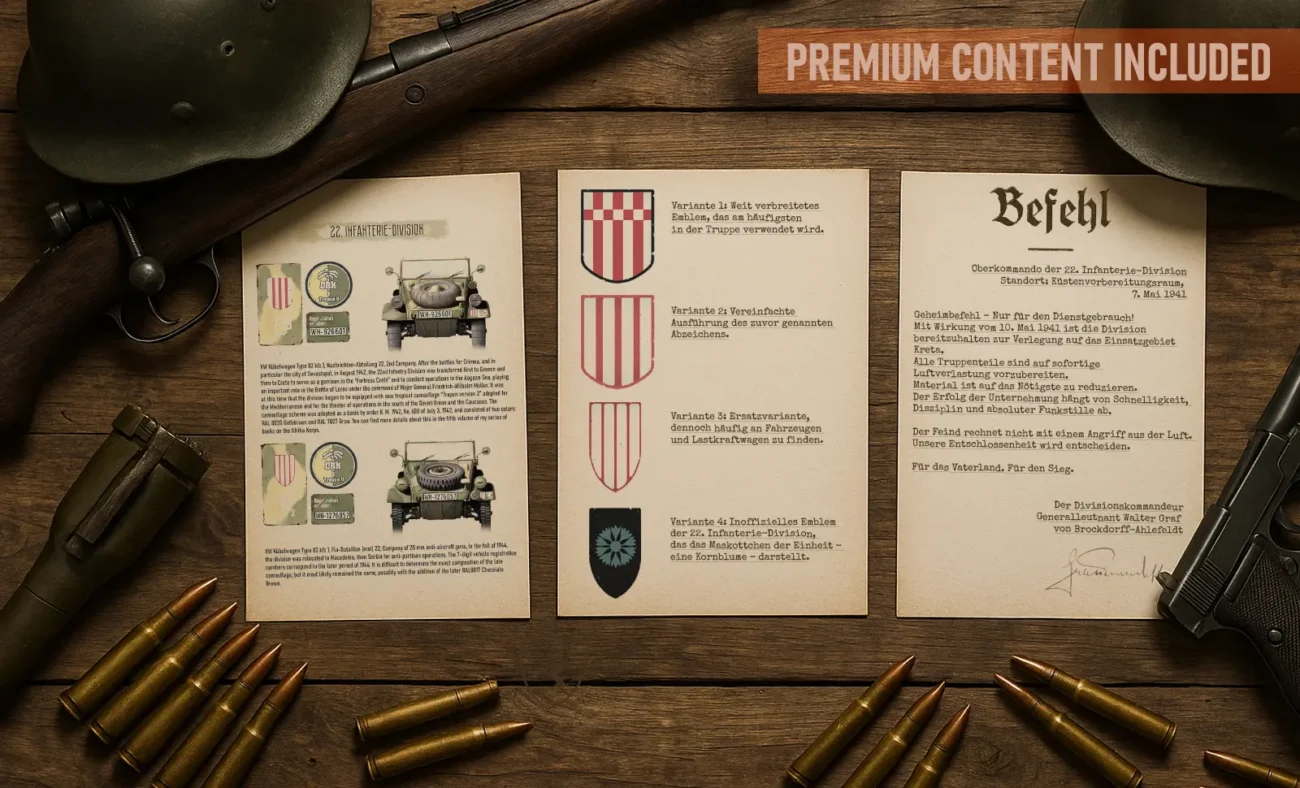
Introduction: 22. (Luftlande) Infanterie-Division
Formed in 1935 and later trained for airborne deployment, the division participated in numerous campaigns, including operations in the Netherlands, Crete, the Eastern Front, and the Balkans. Its complex combat record reflects the evolving structure and strategic demands placed on German infantry divisions throughout the war.
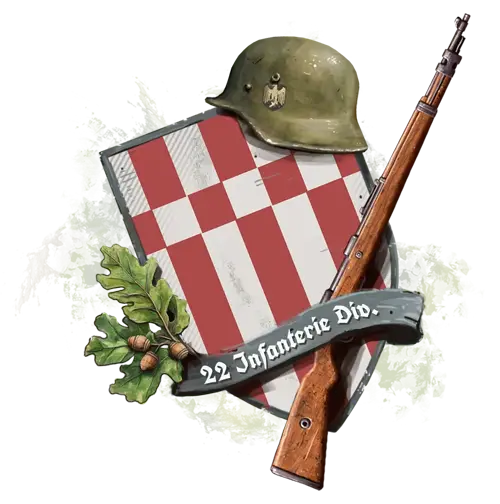
22nd Infantry Division Emblem
Ilustration from the book “German Military Insignia Vol. 1“ by Igor Donchik
📁 Unit Profile
| Unit Name | 22. (Luftlande) Infanterie-Division |
|---|---|
| Formed: | 15 October 1935 |
| Disbanded: | 26 March 1945 |
| Unit evolution: |
Infanterieführer VI →
22. Infanterie Division → 22. (Luftlande) Infanterie Division → 22nd People's Grenadier Division |
| Campaigns served: |
Poland 1939
Western Campaign 1940 Eastern Front 1941-1942 Crete/Aegean Islands 1942-1944 Balkans 1944-1945 |
| Notable moments: |
• Elements of the division were air-landed in the Netherlands in 1940.
• Participated in the assault on Sevastopol in July 1942. • Took part in the capture of the islands of Kos, Kalymnos, Leros, and Samos in September 1943. |
Illustration below:
- Four different versions of the divisional insignia of the 22nd Infantry Division.
The fourth variant features the unit’s unofficial mascot — the cornflower. As shown, several distinct emblem designs were used during the war.
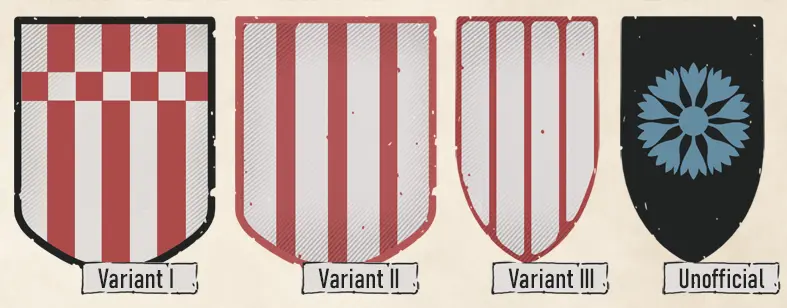
Unit Timeline
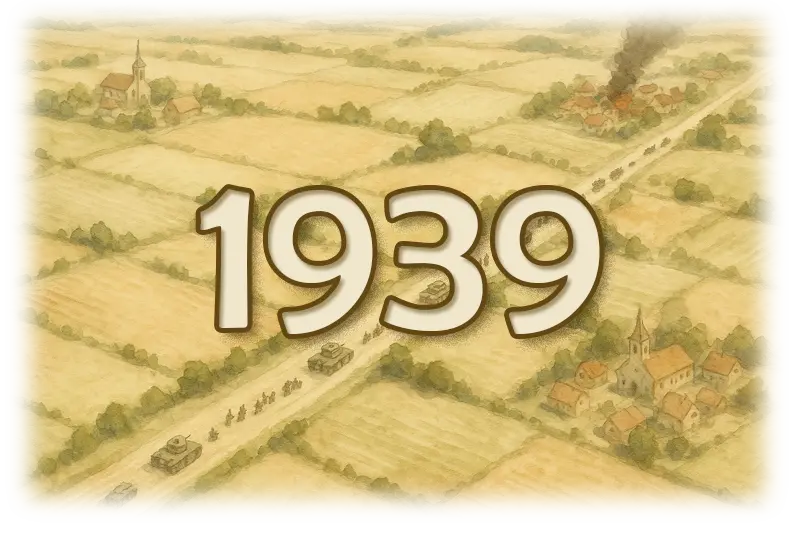
Polish Campaign
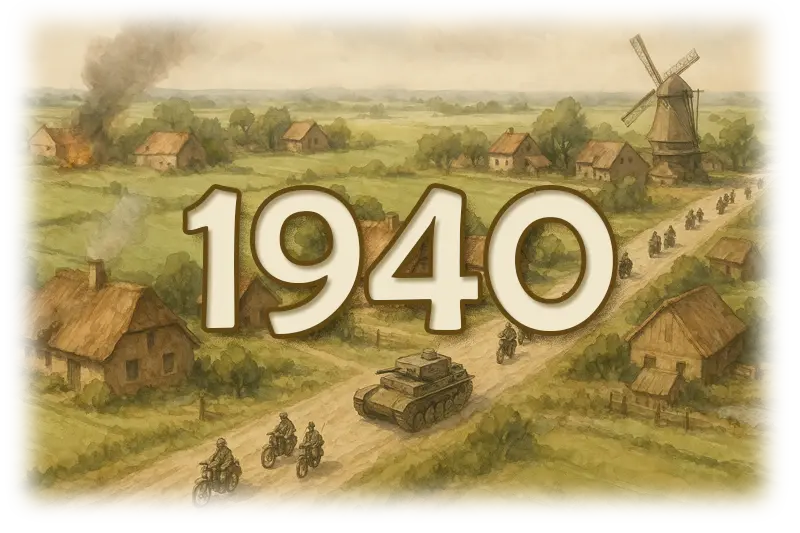
Western Campaign
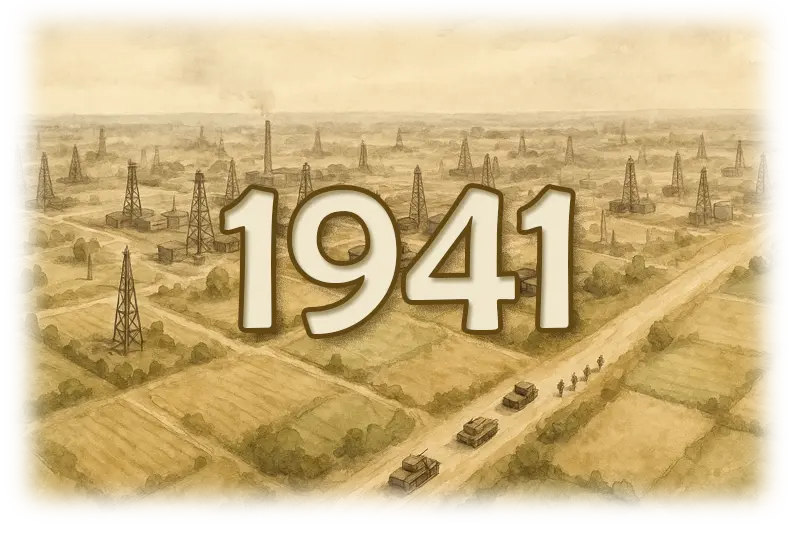
Romania
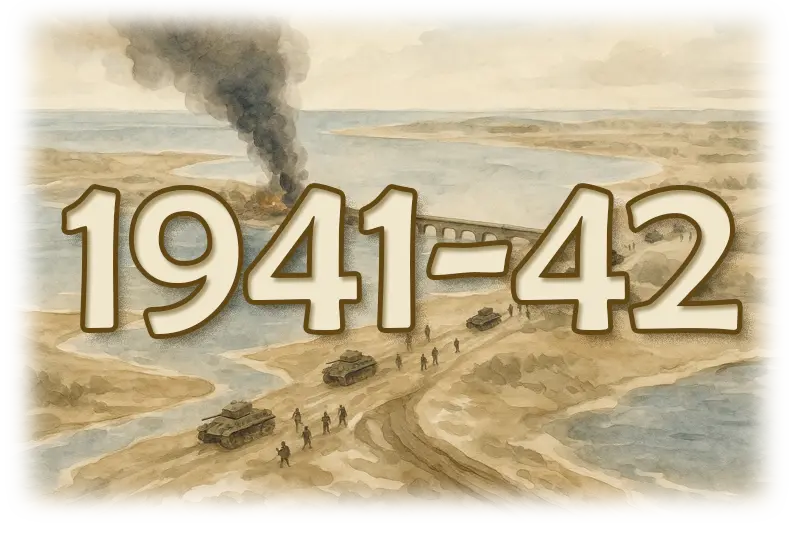
Eastern Front Campaign
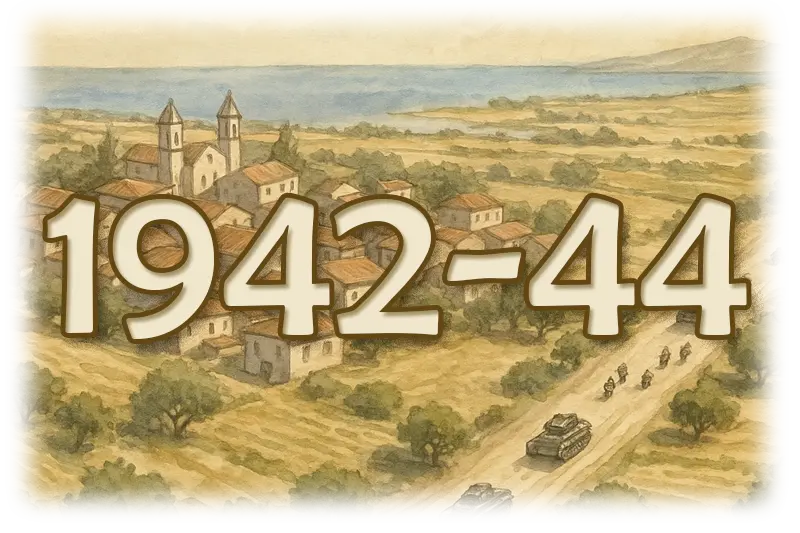
Crete / Aegean Islands
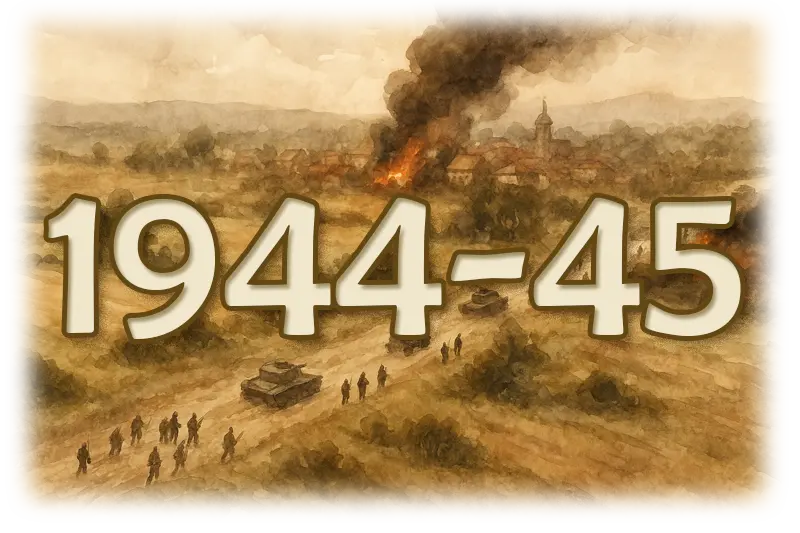
Balkans
Unit Short Overwiev
Formed in October 1935 in Bremen, the 22nd Infantry Division was initially a standard Wehrmacht unit but was later trained as Germany’s only Luftlande (air-landing) division. Unlike paratroopers, it was intended to be flown into captured airfields and rapidly deployed to support airborne operations.
During the Polish Campaign, the division secured positions along the Westwall while Infanterie-Regiment 16 took part in the fighting at the Bzura River. In late 1939, the division was reorganized and trained at Sennelager as an air-landing unit.
The division first saw airborne action during the Western Campaign in May 1940, landing near The Hague and Rotterdam. Despite initial success at Waalhaven and a daring assault on the Maas River bridges by Kampfgruppe Schrader, the northern landings failed due to poor coordination and heavy Dutch resistance. The division regrouped in June and advanced into France, fighting around Dinant and Saint-Quentin.
In June 1941, the division joined Army Group South for the invasion of the Soviet Union. It advanced through Romania, crossed the Pruth, Dnestr, and Dnieper rivers, and fought through the Stalin Line. The division participated in the assault on Sevastopol, capturing key Soviet positions such as the Stalin Werke.
From 1942 to 1944, the division was stationed on Crete for security duties and later took part in amphibious operations in the Aegean, capturing Kos, Kalymnos, Leros, and Samos — with intense fighting during the occupation of Leros.
With the German retreat in the Mediterranean, the division was transferred to mainland Greece in 1944 and engaged in anti-partisan operations in the Balkans. It continued fighting during the German withdrawal and finally surrendered in May 1945.
VW Kübelwagen Type 82 kfz.1, Nachrichten-Abteilung 22, 2nd Company.
After the battles for Crimea, and in particular the city of Sevastopol, in August 1942, the 22nd Infantry Division was transferred first to Greece and then to Crete to serve as a garrison in the “Fortress Crete” and to conduct operations in the Aegean Sea, playing an important role in the Battle of Leros under the command of Major General Friedrich-Wilhelm Müller. It was at this time that the division began to be equipped with new tropical camouflage “Tropen version 2” adopted for the Mediterranean and for the theater of operations in the south of the Soviet Union and the Caucasus. The camouflage scheme was adopted as a basis by order H. M. 1942, No. 600 of July 3, 1942, and consisted of two colors: RAL 8020 Gelbbraun and RAL 7027 Grau. You can find more details about this in the fifth volume of my series of books on the Afrika Korps.Ilustration by Igor Donchik
Documentary photograph used as the basis for the reconstruction (see illustration above).
VW Kübelwagen Type 82 kfz.1, Fla-Bataillon (mot) 22, Company of 20 mm anti-aircraft guns.
In the fall of 1944, the division was relocated to Macedonia, then Serbia for anti-partisan operations. The 7-digit vehicle registration numbers correspond to the later period of 1944. It is difficult to determine the exact composition of the late camouflage, but it most likely remained the same, possibly with the addition of the later RAL8017 Chocolate Brown.Ilustration by Igor Donchik
Documentary photograph used as the basis for the reconstruction (see illustration above).
Interesting Facts about 22nd Infantry Division
1. The Only Luftlande Division in the Wehrmacht
The 22nd Infantry Division was the only German infantry unit trained specifically for air-landing operations. Unlike paratroopers (Fallschirmjäger), it was meant to be flown into captured airfields and act as a rapid deployment force behind enemy lines.
2. First Major Air-Landing Operation — and a Costly Failure
During the 1940 invasion of the Netherlands, the division suffered severe casualties due to poor coordination, bad landing zones, and stiff Dutch resistance. The operation failed to achieve its key objectives, and the Wehrmacht never again used conventional infantry divisions in air-landing roles.
3. Bold Bridge Assault: Kampfgruppe Schrader
In one of the boldest small-unit operations of the war, 120 men from the division were flown in floatplanes (He 59s) to seize the Maas River bridges in central Rotterdam. They captured all four bridges without any losses and held them for days against Dutch counterattacks from air, land, and naval forces.
4. Brutal Urban Combat in Sevastopol
The division took part in the storming of Sevastopol in 1942, fighting through heavily fortified Soviet positions like the Stalin Werke and Wolga Werke, in one of the bloodiest battles on the southern front of the Eastern campaign.
5. Amphibious Assaults in the Aegean Sea
Although no longer an air-landing unit by 1943, the division was used as the main strike force in amphibious operations in the Aegean, helping to capture Kos, Kalymnos, Leros, and Samos. The Battle of Leros in particular involved fierce fighting against British and Italian defenders.
6. Grueling Retreat Across the Balkans
Following the evacuation from Crete in 1944, the division took part in harsh anti-partisan warfare and then began a long retreat through Macedonia, Serbia, and Bosnia, facing constant attacks from Tito’s forces.
On 26 March 1945, the division was officially redesignated as the 22nd Volksgrenadier Division, though due to the collapse of the front and limited resources, the transformation was largely nominal.
Note:This information is based on open sources and confirmed by archival materials, including holdings of the Bundesarchiv.

